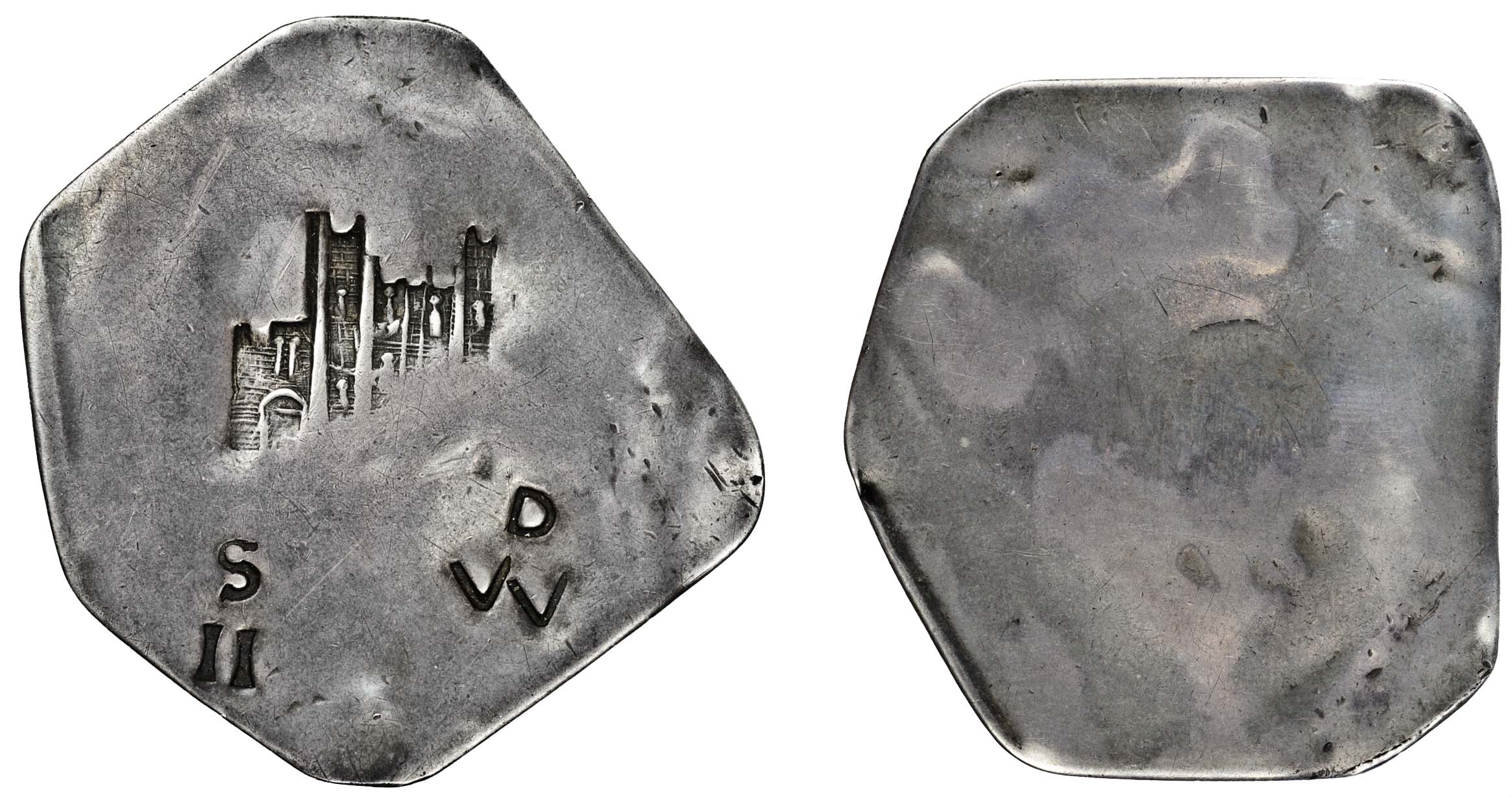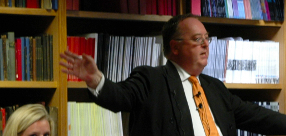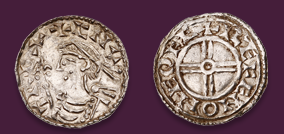
Auction: 12009 - The Magnus Collection, Ancient, English & Foreign Coins and Commemorative Medals
Lot: 963
Charles I, Civil War coinages, Scarborough beseiged, July 1644-July 1645, Two Shillings and Tenpence, 13.32g, type II, struck on a large irregular piece of silver, view of castle, value below s ii d vv (Brooker -; N.2650(d), S.3156), with out doubt, from authentic Scarborough punches, possibly only one other known for this denomination (see Archbishop Sharp, lot 121), very fine, extremely rare, one of the great rarities of the Civil War coinages Estimate £ 30,000-35,000 provenance Spink auction 124, 18-19 November 1997, lot 1774 LaRiviere, Spink auction 75, 29 March 1990, lot 247 D. Duprée, collection acquired by Spink, 1989 R.C. Lockett, Glendining, 11-17 October 1956, lot 2577 V.M. Brand, collection dispersed post mortem from 1932 J.G. Murdoch, Sotheby, 8-13 June 1903, lot 356 J.E. Moon, Sotheby, 7-10 May 1901, lot 234 Duchess of Beaufort, Christie´s, 1-2 May 1890, lot 70 This coin illustrated in the Spink Standard Catalogue, S.3156. Scarborough Castle, held by Sir Hugh Cholmondeley for the King, surrendered to Sir Mathew Bointon on July 22 1645 after being besieged for 12 months. During the siege the need for coin to pay the defenders, as at other Royalist locations under duress, was met by using silver plate to make coins. Scarborough siege prices are unusual for their irregular shape and the range of unusual denominations. The whole production has an air of improvisation about it with the silver plate being cut into irregular fragments for which a ´coinage´ value was then determined based on the weight. The coin was stamped with an image of Scarborough Castle and marked with a value using a set of puncheons. A number of coins in the form and style of the Scarborough siege pieces survive in which the mark of value is struck by a different set of puncheons. These are now regarded as later creations not associated with the 1644-45 siege production. The example offered here was struck using the set of puncheons which are accepted as those used for coins produced during the siege.
Sold for
£58,000




